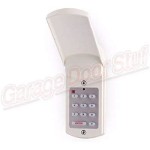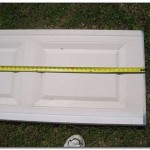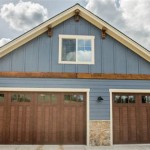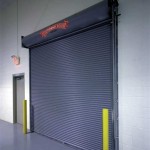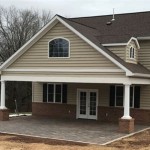Building a Garage with an Apartment Above: A Comprehensive Guide
The concept of building a garage with an apartment above, often referred to as a garage apartment or carriage house, presents a versatile solution for homeowners seeking extra living space, rental income opportunities, or a dedicated area for hobbies and creative pursuits. This type of structure combines the practical function of a garage with the comfort and independence of a separate living unit. However, successful execution requires careful planning, adherence to local regulations, and a clear understanding of the construction process.
Prior to commencing any building project, especially one involving living quarters, thorough research is paramount. This includes investigating local zoning ordinances, building codes, and homeowners association (HOA) rules. Zoning ordinances will dictate permissible land use, setbacks, height restrictions, and parking requirements. Building codes specify the minimum standards for safety and structural integrity, covering aspects like fire resistance, electrical wiring, plumbing, and ventilation. HOA rules, if applicable, may impose further restrictions on architectural style, materials, and occupancy. Failure to comply with these regulations can result in costly delays, fines, or even legal action.
Budgeting realistically is crucial for managing finances effectively throughout the construction process. Costs will vary depending on the size and complexity of the structure, the chosen materials, and the location. It is advisable to obtain multiple quotes from contractors and suppliers to compare prices and ensure competitive bidding. A contingency fund, typically 10-20% of the total budget, should be set aside to cover unexpected expenses, such as unforeseen site conditions or material price increases. Consider long-term costs as well, including property taxes, insurance, and utilities. If the apartment is intended for rental income, research local rental rates to determine potential revenue streams.
Selecting the right design and layout is essential for both functionality and aesthetics. The garage component should accommodate the intended vehicles and storage needs, while the apartment above should provide comfortable and efficient living space. Considerations include the number of bedrooms and bathrooms, the size of the living area and kitchen, and the presence of features like balconies or patios. The design should also integrate seamlessly with the existing house and landscape. Hiring an architect or experienced designer can help create a plan that meets specific needs and complies with all applicable regulations.
Key Point 1: Navigating Legal and Regulatory Requirements
The legal and regulatory landscape surrounding accessory dwelling units (ADUs), including garage apartments, is constantly evolving. Many municipalities are actively promoting ADUs as a means of addressing housing shortages and affordability issues. However, the specific rules and regulations can vary significantly from one jurisdiction to another. It is essential to consult with local planning and building departments to obtain accurate and up-to-date information on permissible uses, zoning requirements, building codes, and permit procedures.
Key legal considerations include:
- Zoning Compliance: Ensuring that the proposed garage apartment complies with all applicable zoning regulations, including setbacks, height restrictions, lot coverage limits, and parking requirements. Variances may be required if the property doesn't meet all the zoning standards.
- Building Codes: Adhering to all applicable building codes, including those related to structural integrity, fire safety, electrical wiring, plumbing, and ventilation. Inspections are typically required at various stages of construction to ensure compliance.
- Permit Requirements: Obtaining all necessary building permits before commencing any construction work. The permit application process typically involves submitting detailed plans and specifications for review and approval.
- HOA Restrictions: Complying with any restrictions imposed by homeowners associations, including architectural guidelines, material limitations, and occupancy rules.
- Accessibility Standards: Depending on the jurisdiction and intended use, the apartment may need to comply with accessibility standards, such as those outlined in the Americans with Disabilities Act (ADA).
- Rental Regulations: If the apartment is intended for rental income, adhere to all applicable landlord-tenant laws, including those related to leases, security deposits, and eviction procedures.
Failure to address these legal and regulatory considerations can result in significant delays, fines, or even the demolition of the structure. Seeking professional guidance from a real estate attorney or land use consultant can help navigate these complexities and ensure compliance.
Key Point 2: Structural Considerations and Design Elements
The structural integrity of a garage apartment is paramount, as it involves supporting a living space above a garage. The foundation, framework, and roofing system must be designed and constructed to withstand the weight and stresses associated with both the garage and the apartment. Careful attention must be paid to load-bearing walls, beams, and columns.
Important structural considerations include:
- Foundation: Ensuring that the foundation is adequate to support the weight of the entire structure, including the garage, apartment, and any additional loads, such as snow or wind.
- Framing: Utilizing appropriate framing materials and techniques to create a strong and stable framework for both the garage and the apartment. This may involve using engineered lumber or steel to provide additional support.
- Soundproofing: Incorporating soundproofing measures to minimize noise transmission between the garage and the apartment. This can include using insulation with a high sound transmission class (STC) rating, installing resilient channels on walls and ceilings, and sealing gaps and cracks.
- Fire Resistance: Implementing fire-resistant construction techniques and materials to protect the occupants in case of a fire. This may involve using fire-rated drywall, installing fire-rated doors, and incorporating fire sprinklers.
- Insulation: Installing adequate insulation to maintain a comfortable living environment and reduce energy consumption. This includes insulating walls, ceilings, and floors with appropriate R-values.
- HVAC System: Installing a separate heating, ventilation, and air conditioning (HVAC) system for the apartment to provide independent temperature control and maintain air quality. Ductless mini-split systems are often a good option for garage apartments.
Beyond structural elements, design choices significantly impact the usability and appeal of the space. Thoughtful design ensures both functionality and aesthetic harmony with the main residence.
- Separate Entrance: Providing a separate entrance to the apartment to ensure privacy and independence for the occupants. This may involve building a staircase on the side or rear of the garage.
- Adequate Lighting: Incorporating ample natural and artificial lighting to create a bright and inviting living space. This includes installing windows, skylights, and a variety of light fixtures.
- Efficient Layout: Designing an efficient layout that maximizes space utilization and flow. This may involve using open floor plans or incorporating multi-functional furniture.
- Exterior Design: Integrating the exterior design of the garage apartment with the existing house and landscape. This can involve using similar materials and architectural styles.
- Storage Solutions: Incorporating ample storage solutions to minimize clutter and maintain a tidy living space. This may involve building closets, shelving, or incorporating built-in storage units.
Engaging a qualified architect or structural engineer is essential to ensure the structural integrity and safety of the garage apartment.
Key Point 3: Cost Considerations and Return on Investment
The cost of building a garage with an apartment above can vary significantly depending on several factors, including the size and complexity of the structure, the chosen materials, the location, and the labor costs. A detailed budget should be developed that accounts for all potential expenses, including design fees, permit fees, materials, labor, and contingencies.
Key cost considerations include:
- Design and Planning Fees: Costs associated with hiring an architect or designer to create the plans and specifications for the garage apartment.
- Permit Fees: Fees charged by local governments for building permits and inspections.
- Materials Costs: Costs of all the materials needed for construction, including lumber, concrete, roofing, siding, windows, doors, insulation, electrical wiring, plumbing, and fixtures.
- Labor Costs: Costs of hiring contractors to perform the construction work, including framing, roofing, siding, electrical, plumbing, and HVAC.
- Site Preparation Costs: Costs associated with preparing the site for construction, including clearing, grading, and excavation.
- Utility Connection Costs: Costs of connecting the apartment to utilities, such as water, sewer, electricity, and gas.
- Landscaping Costs: Costs of landscaping and improving the surrounding yard.
- Contingency Fund: A reserve fund to cover unexpected expenses or cost overruns.
Evaluating the potential return on investment (ROI) is crucial to determine the financial viability of the project. The ROI can be calculated by comparing the costs of construction with the potential income generated from renting out the apartment or the increase in property value. If the apartment is not rented, the increase in property value and the convenience of having extra living space can be considered the ROI.
Factors to consider when evaluating the ROI include:
- Rental Income: The potential monthly rental income that can be generated from renting out the apartment. Research local rental rates to determine the market value of similar units.
- Property Value: The potential increase in property value resulting from the addition of the garage apartment. Consult with a real estate appraiser to determine the potential impact on property value.
- Tax Implications: The tax implications of owning and renting out the apartment. Consult with a tax advisor to understand the potential tax benefits and liabilities.
- Operating Expenses: The ongoing operating expenses associated with owning and renting out the apartment, such as property taxes, insurance, utilities, and maintenance.
A well-planned and executed garage apartment can be a valuable asset, providing extra living space, generating rental income, and increasing property value. A thorough cost-benefit analysis is essential to ensure that the project is financially sound and meets the homeowner's objectives.

Garage Apartment Plans Detached With Apt Floor Houseplans Com

Extended 2 Car Two Story Garage Plan W Apartment Option

Garage Apartment Plans Coolhouseplans Com

Garage With Apartment Above Plans Loft Living Space America S Best House Blog

Building An Apartment Above Our Garage Youtube

Garage Apartment Plans Coolhouseplans Com

How To Build A Garage Loft Apartment Salter Spiral Stair

Garages Living With Cars Functioning Live Carriage And Almost Parking Garage Small Car Main Architectural Quarters Apartment Fully Plan Gives Above Floor Designs Plans 2 Bedroom Cost Of Building A Two Upstairs

Garage Apartment Danley S Garages

Garage Plans W Storage And Apartment 1 2 3 Cars



